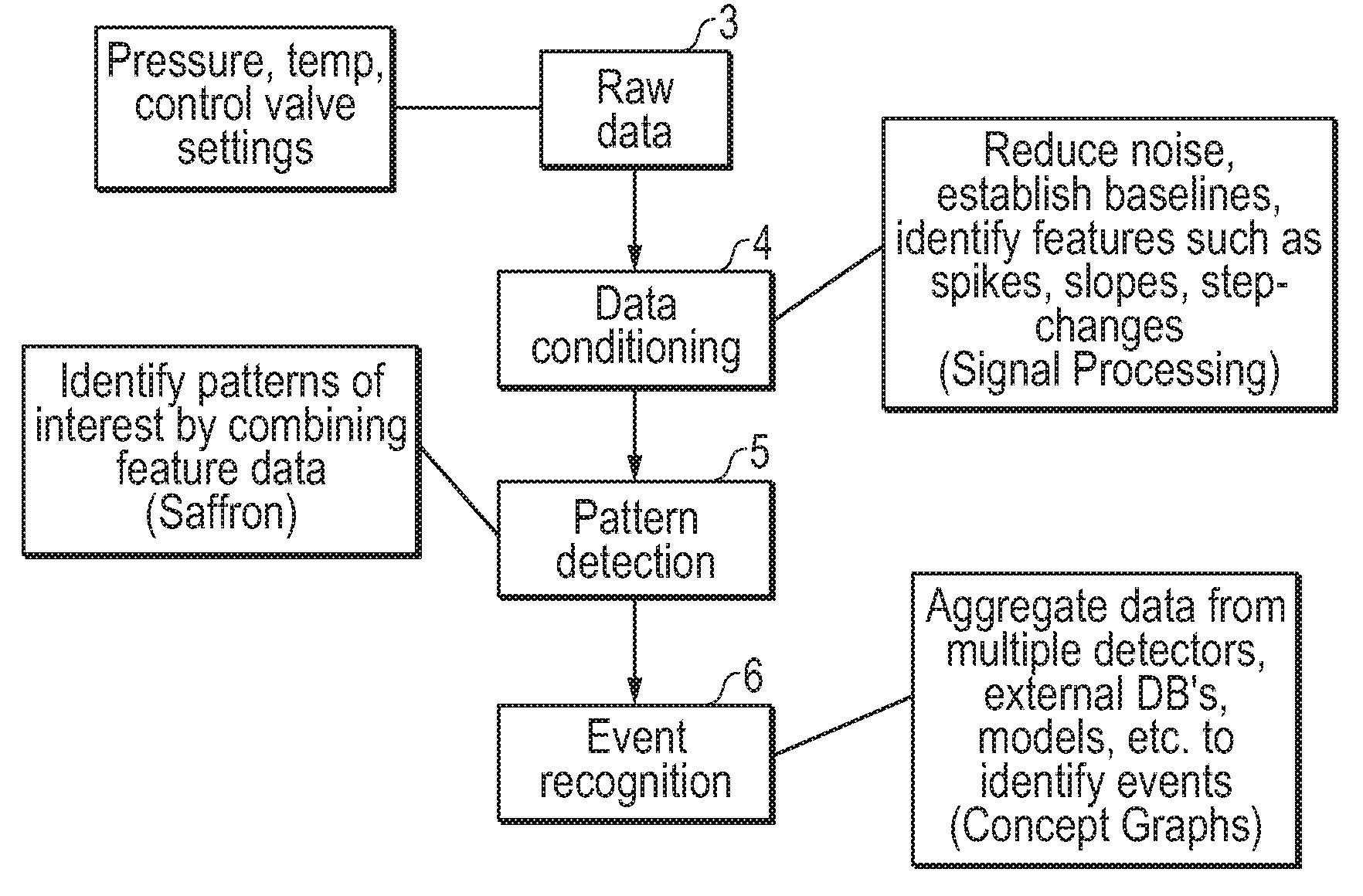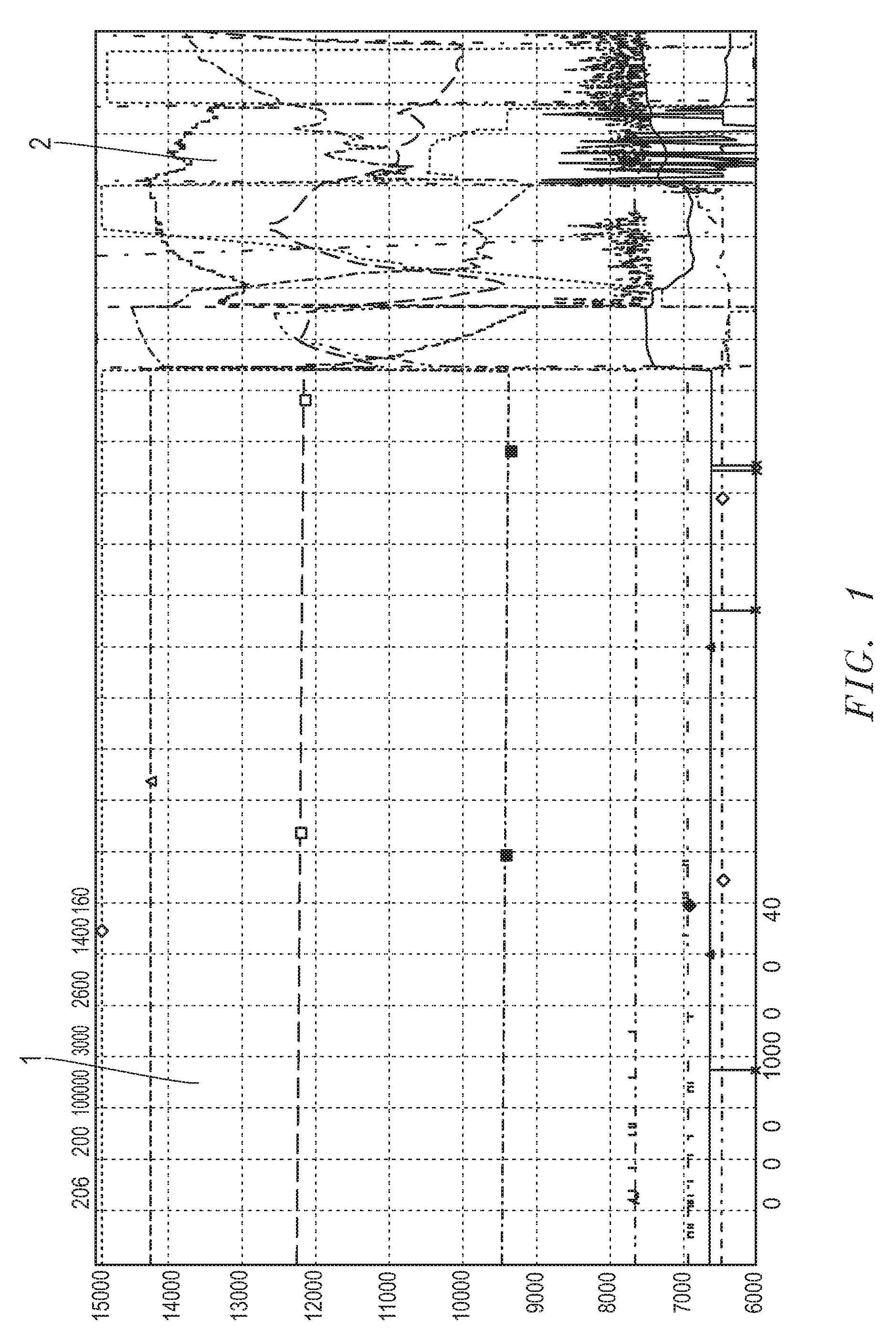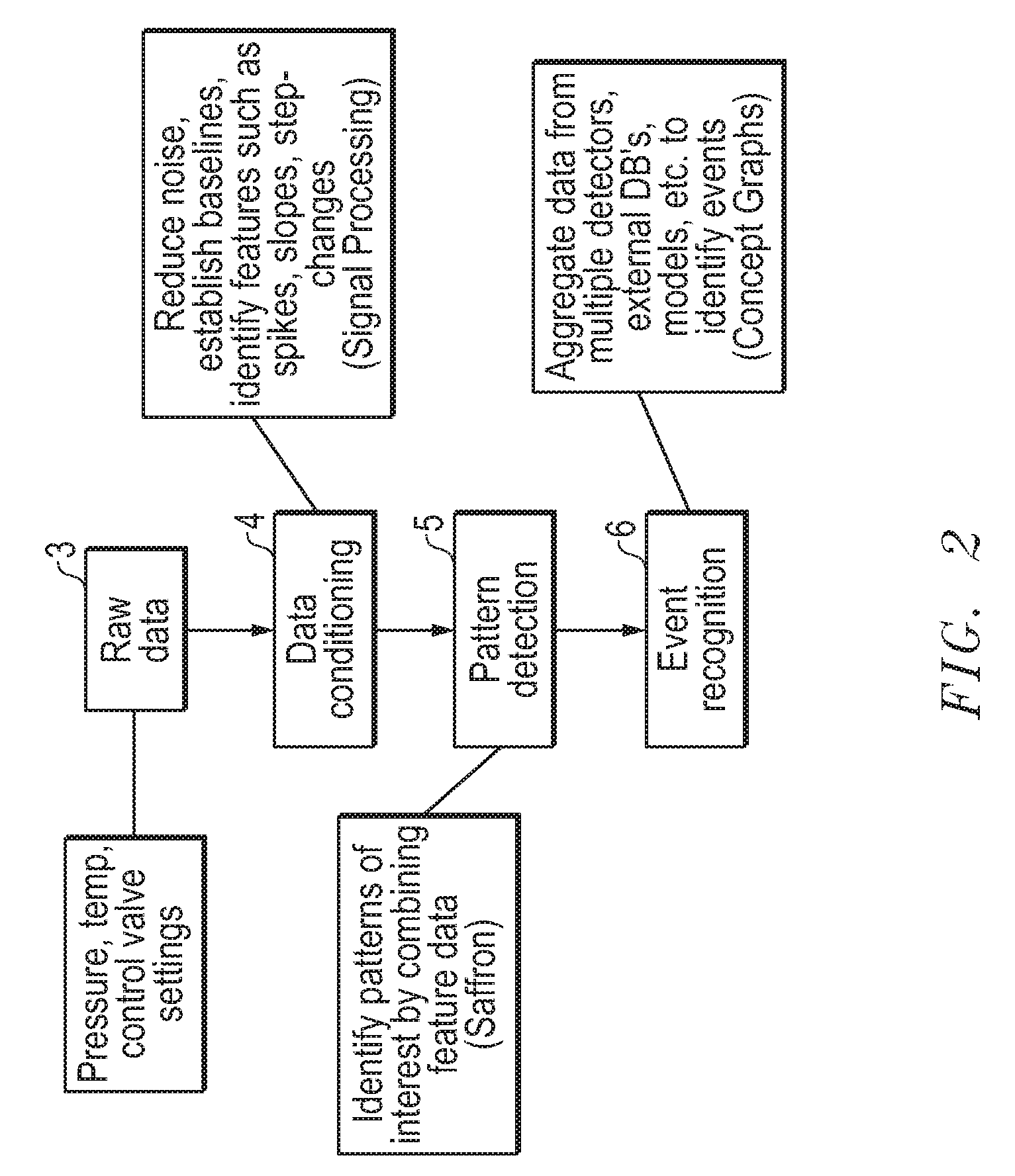Building and Using Intelligent Software Agents For Optimizing Oil And Gas Wells
a technology of software agents and wells, applied in the direction of surveying, instruments, borehole/well accessories, etc., can solve the problems of large amounts of data which cannot be processed in a time frame, difficult to control these systems and optimize their efficiency, and extremely difficult and expensive to build multiple agents
- Summary
- Abstract
- Description
- Claims
- Application Information
AI Technical Summary
Benefits of technology
Problems solved by technology
Method used
Image
Examples
Embodiment Construction
[0054]1. Core Event Recognizer Concepts
[0055]Fundamental to the present invention is that the intelligent agents provide an assessment of the environment of a process that one wishes to monitor. In that environment, the software agent searches for “events” that indicate proper or dysfunctional behavior of the oil or gas well. An event recognizer's primary function in a surveillance system is to monitor data arriving in real-time from a well's sensors and other data sources such as daily reports and periodic well test, with the intent of detecting anomalies in the data stream that indicate both normal functioning and problems in the well.
[0056]FIG. 1, an example of a well which has experienced a sand failure, illustrates the problem. Note the relatively stable data channels in the region 1 to the left of the graphic and the chaotic traces on the right in the region denoted by 2. Operators responsible for monitoring high-value assets spend much of their time looking at data streams su...
PUM
 Login to View More
Login to View More Abstract
Description
Claims
Application Information
 Login to View More
Login to View More - R&D
- Intellectual Property
- Life Sciences
- Materials
- Tech Scout
- Unparalleled Data Quality
- Higher Quality Content
- 60% Fewer Hallucinations
Browse by: Latest US Patents, China's latest patents, Technical Efficacy Thesaurus, Application Domain, Technology Topic, Popular Technical Reports.
© 2025 PatSnap. All rights reserved.Legal|Privacy policy|Modern Slavery Act Transparency Statement|Sitemap|About US| Contact US: help@patsnap.com



